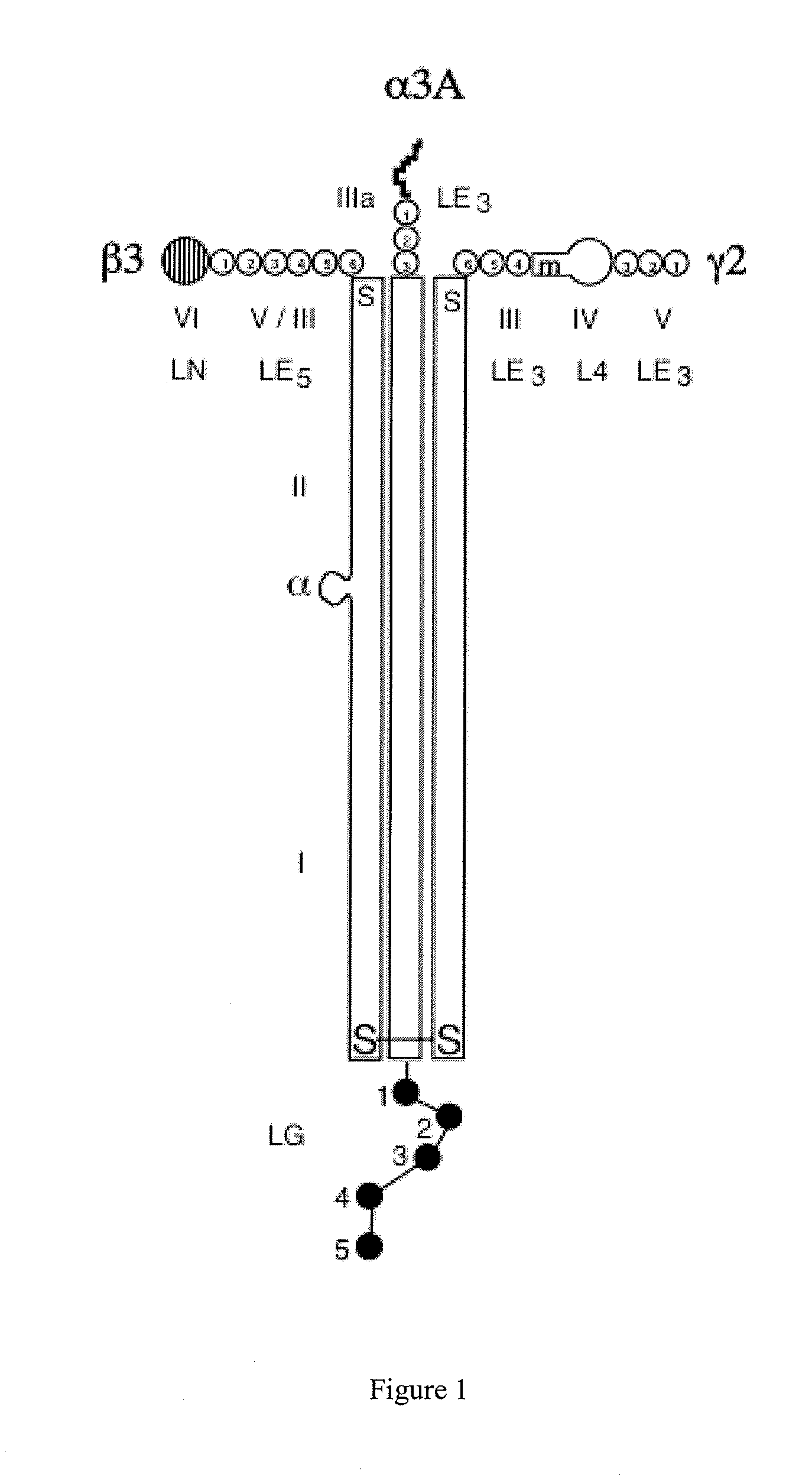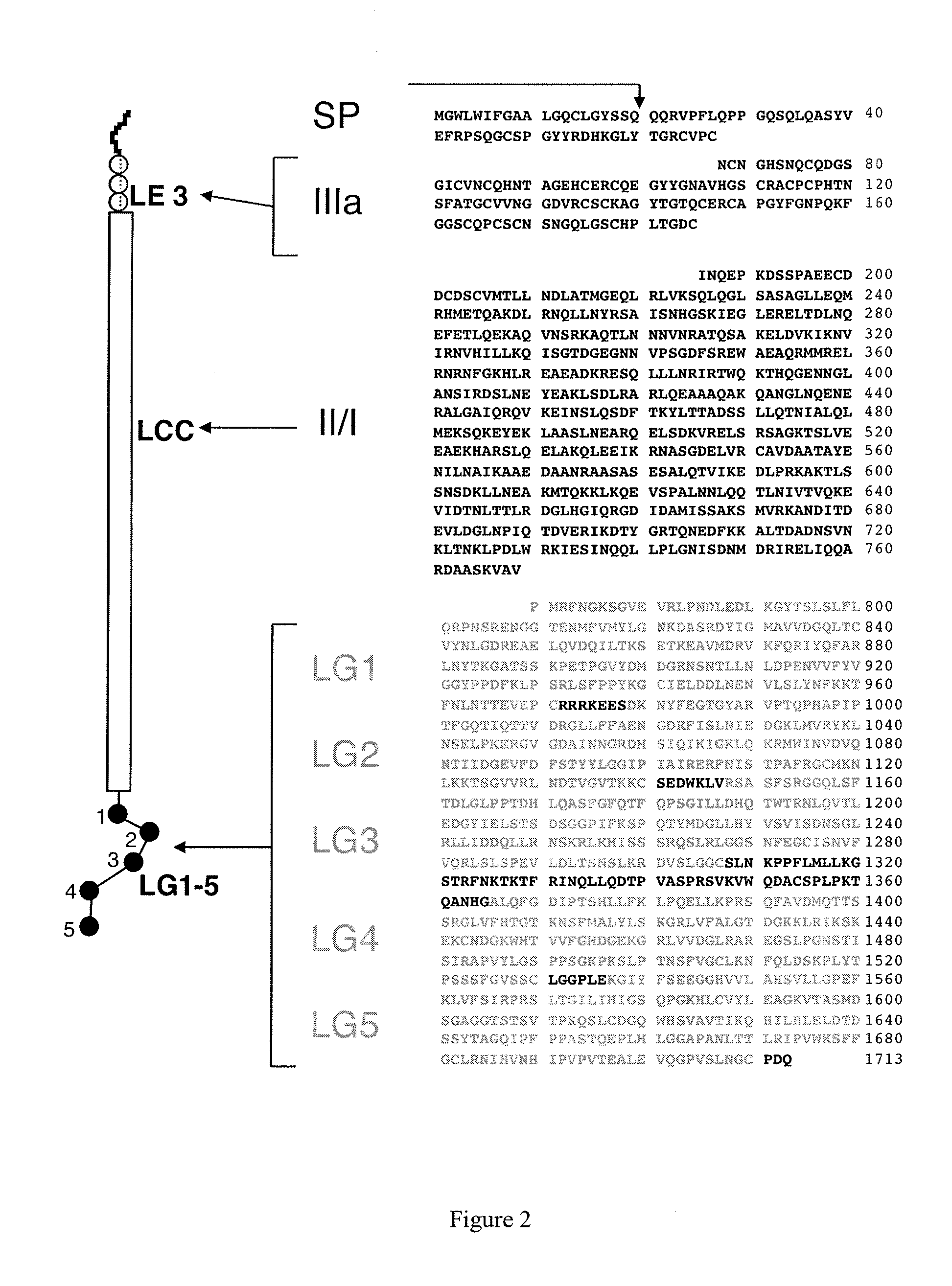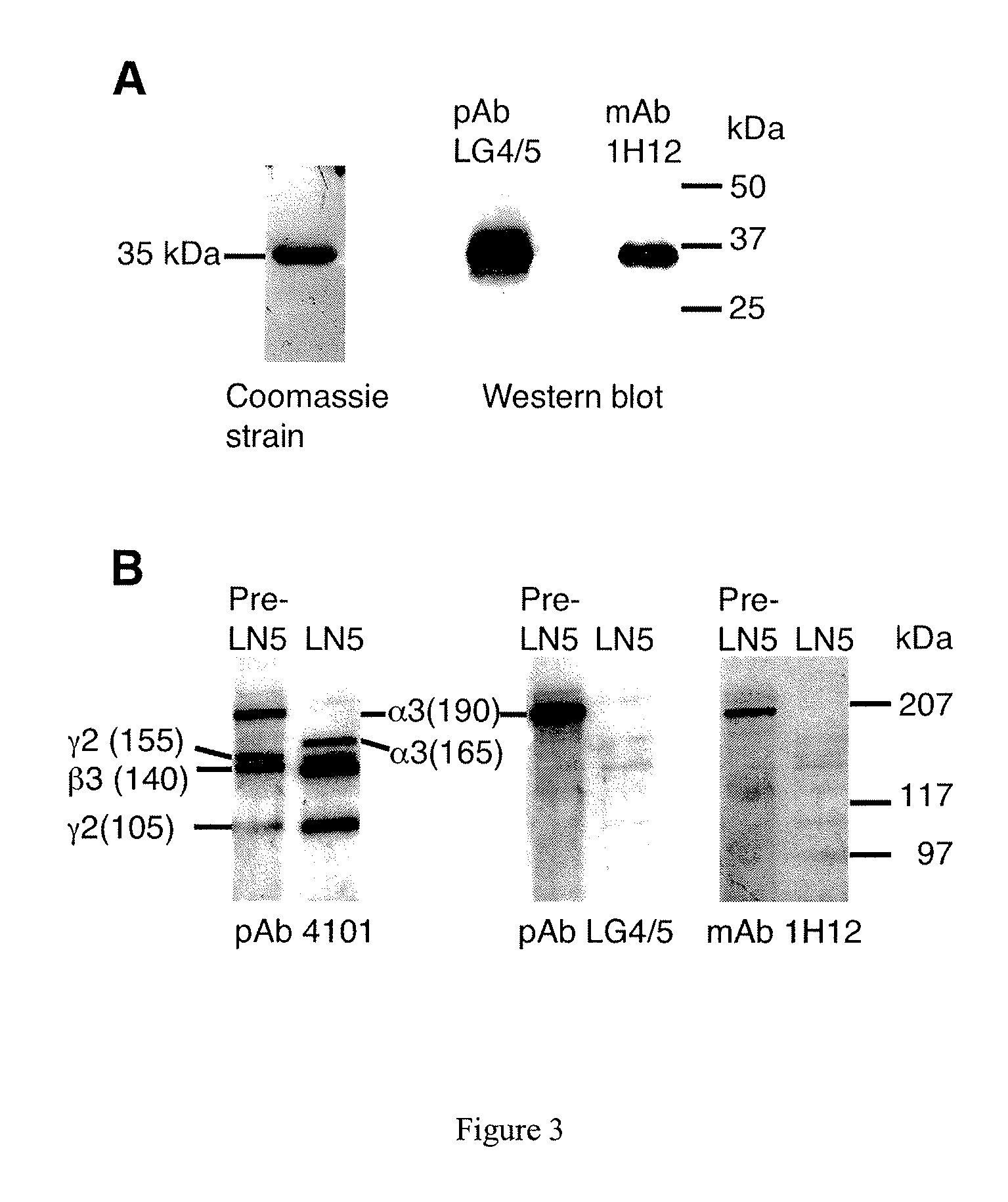Monoclonal antibodies directed against LG4-5 domain of alpha3 chain of human laminin-5
a technology of human protein laminin-5 and monoclonal antibodies, which is applied in the field of cancer therapy, can solve the problems of insufficient cure, inability to always be possible, and the number of cancers to continue to increas
- Summary
- Abstract
- Description
- Claims
- Application Information
AI Technical Summary
Benefits of technology
Problems solved by technology
Method used
Image
Examples
example 1
Method of Preparation of Monoclonal Antibodies Directed to LN5 Alpha3 LG4 / 5 Domain Inhibiting the Interaction Between this Domain and Syndecan-1
[0206]The inventors have recombinantly expressed the human alpha3LG4 / 5 fragment. They have also identified the heparan sulfate proteoglycan receptor syndecan-1 from normal human skin keratinocytes (NHK) and other epithelial cells as a receptor for this fragment (Okamoto et al. 2003).
[0207]LN5 is known for its role in promoting carcinoma cell migration, notably those with malignant characteristics, and may act as a ligand for invasiveness (Miyazaki K. 2006). However, it is not known whether the interaction between LN5 alpha3 LG4 / 5 domain and syndecan-1 is involved in malignant process. The inventors decided to address this question by providing specific inhibitors of this interaction.
[0208]In order to develop inhibitors of the LG4 / 5 domain and specifically block the syndecan-1 mediated interaction with pre-LN5, the inventors have raised mouse...
example 2
Effect of 1H12 mAb on Cell Migration and Cancer Cells
[0219]Western blotting experiments using 1H12 mAb revealed that it specifically recognizes the LG4 / 5 fragment. In addition, this antibody binds specifically to the precursor form of the alpha3 chain while no binding was found to the mature form of alpha3 lacking the LG4 / 5 domain (FIG. 3). Indeed, epitope mapping experiments showed that the 1H12 monoclonal antibody specifically recognizes the peptide of sequence LDSKPLYTPSSSF (SEQ ID NO: 25) located in the LG4 domain (FIG. 18). This is confirmed by competition experiments showing that binding of LG4 / 5 to 1H12 is lost when a synthetic peptide of sequence: LDSKPLYTPSSSF (SEQ ID NO: 25) is added (FIG. 18).
[0220]As pre-LN5 was shown to be specifically and highly expressed by leading and migrating keratinocytes localized at the edges of wounds closure (Ryan et al. 1994; Goldfinger et al., 1999), the LG4 / 5 fragment in pre-LN5 could be involved in migration.
[0221]To test this hypothesis, ...
PUM
| Property | Measurement | Unit |
|---|---|---|
| pH | aaaaa | aaaaa |
| pH | aaaaa | aaaaa |
| pH | aaaaa | aaaaa |
Abstract
Description
Claims
Application Information
 Login to View More
Login to View More - R&D
- Intellectual Property
- Life Sciences
- Materials
- Tech Scout
- Unparalleled Data Quality
- Higher Quality Content
- 60% Fewer Hallucinations
Browse by: Latest US Patents, China's latest patents, Technical Efficacy Thesaurus, Application Domain, Technology Topic, Popular Technical Reports.
© 2025 PatSnap. All rights reserved.Legal|Privacy policy|Modern Slavery Act Transparency Statement|Sitemap|About US| Contact US: help@patsnap.com



